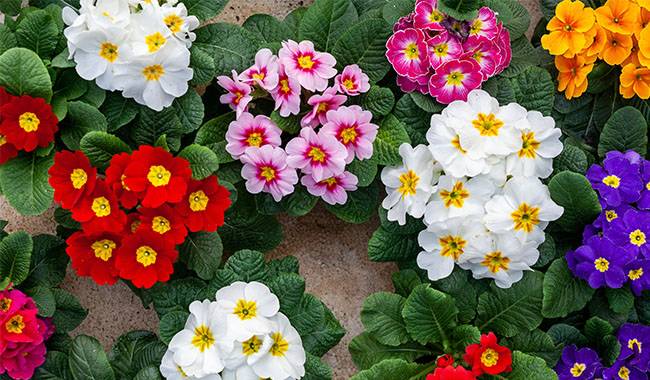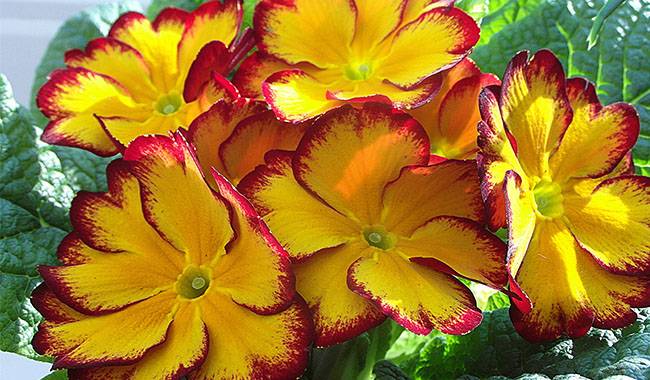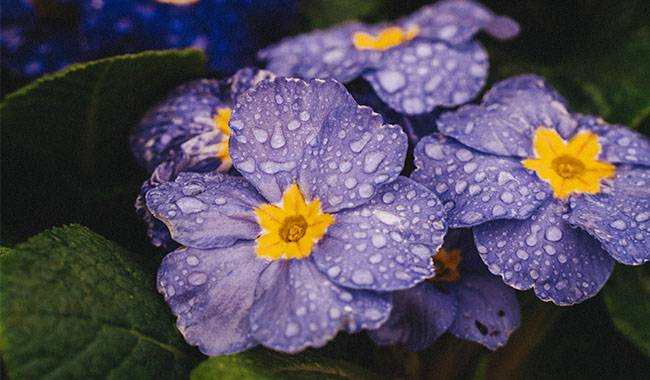
The indoor Primrose collection allows you to choose from compact or more lush plants with various colorful flowers. Stemless Primrose plants bloom in winter or spring. Delicate miniature tricolor Primrose plants bloom on dwarf stems up to 20 inches (50 cm) long. Compact potted Primrose plants look like miniature bouquets. It bushy bush with flowers up to 2.5 inches (6.5 cm) long, inverted conical Primrose plant. But the cultivation mistakes, as well as the care peculiarities, are similar for all Primrose plants. This plant likes to be cool but is not so capricious, and with diligence and attention, it can have great difficulties. Let’s take a closer look at the main mistakes when growing the Primrose plants in a room. You will learn how to grow Primrose plants in ThumbGarden’s article.
Not creating the right conditions
Primrose plant bushes in miniature pots are filled with shelves. However, only those who keep the plant cool during flowering and provide regular care without interrupting watering will be able to appreciate its long-lasting flowers.
The Primrose plant is not suitable for interior decoration in a room. Do not think of it as a “living bouquet” to decorate your coffee table, as it is extremely light-demanding.
Not much sunlight
In the garden, the Primrose plant is well suited to shady areas. It is not always comfortable in the room, even on the windowsill – only on the western or partly western windows, in extreme cases – on the eastern windows. Direct sunlight tolerates the Primrose plant only in the early morning or late afternoon, and on the south-facing windows, it suffers from heat and gets “burnt.” But even on the north side, it fades and “falls apart” quickly due to lack of light.
Primrose plant lacks humidity
Although Primrose plants are not from the tropics, they like high air humidity. They do not need 70-85%, but moderate to moderately high humidity levels will allow them to maintain brilliant flower and foliage quality. Do not add humidity by spraying; only a humidifier or a tray with moist expanded clay, moss, or pebbles is suitable.
Place the Primrose plant in a warm room
Primrose plants do not lose their hardiness when moved into pots and prefer to bloom in a cooler place. Even if the shrubs are subsequently discarded, you should not leave them in the usual living room conditions. During flowering, Primrose plants will prefer temperatures of 50-53 °F (10-12 °C) with a maximum limit of 59 °F (15 °C). You should not be surprised if Primrose plants bloom quickly without cooler temperatures.
Perennial Primrose plants should be prepared to flower at the same temperatures. Still, they do well in warm and hot temperatures in the summer after flowering (the shrub should be taken out onto the balcony or into the garden). More vigorous flowering can be achieved if Primrose plants are kept at a temperature of about 50 °F (10 °C) for a month before flowering.

Over-zealous watering
Primrose plants like to be watered regularly and are sensitive to dry substrates. But too much water is not suitable for them either. At least in pots, they do not tolerate overwatering very well. To reduce the risk of rot and keep the roots healthy, it is best to dry the top layer of soil between waterings and immediately drain any water that leaks into the tray. In winter, dry the substrate more often and water the plants less often.
Failing to fertilize at the right time
Primrose plants can be fertilized just like any other flowering houseplant, even if they are discarded after flowering. Of course, it is perfectly possible to leave Primrose plants unfertilized at this point, but extending the flowering time will be difficult to achieve. Fertilizer should be applied as soon as the first buds appear. To avoid overgrowth and overfeeding, reduce the fertilizer concentration by half every 2 weeks. Fertilization is completed at the end of summer growth for perennial plants and flowering for abandoned Primrose plants.
For Primrose plants in the room, it is best to use fertilizer from a nice flowering crop.
Lack of fresh air
Primrose plants like fresh air. In addition, it is the lack of fresh air that most often causes diseases and pests. That said, ventilation and sudden changes are not the best options, and plants are better protected from changes in the maintenance. However, the room’s ventilation should be regular and frequent, independent of maintaining the temperature. The plant prefers to spend the summer in the fresh air in summer.
Incorrect planting and improper substrate
Primrose plants should not be disturbed if they are planned to be discarded or transplanted to the garden after flowering. Repot perennial plants each year in early spring.
Plants are often mistakenly rushed into new, high-quality soil after purchase, believing that the substrate in which Primrose plants were growing before purchase is somehow defective. However, flowering plants are best left entirely undisturbed, keeping in mind that Primrose plants also need a standard quarantine period and stable conditions without undue stress.
Repotting should only be done urgently if the Primrose plant has grown all over the pot and there are no other options. The soil does appear compacted and mouldy (the quality of the substrate is best checked before rather than after purchase).
If plants are transplanted, care should be taken to avoid contact with the roots and maintain the level of the previous planting as much as possible. Under no circumstances should they be sunk deeper to improve their ornamental value. Deep planting is a major cause of plant death.
Primrose plants prefer light, well-drained, nutrient-rich, general-purpose soil with loosening additives. There is also a high drainage layer.

Grey rot – it’s dangerous
On Primrose plants, patches of gray rot – moist and brightly visible on succulent green plants are as common as root rot. Gray mold infestations are so severe that they often destroy entire plants. Botrytis rot occurs on Primrose plants in three situations.
- If the plant is watered incorrectly, allow the tray to be constantly wet and waterlogged. If the roots rot, the Primrose plant will begin to wilt, and the lesions can usually be seen at the base of the rosette. But the main sign is an unpleasant musty smell from the substrate and top layer of wet soil.
- If the Primrose plant is planted too deeply, the center of the rosette will begin to die. Gray mold can be easily recognized by the darkening and softening of the diseased tissue.
- Grey leaf rot is more likely to occur in poorly ventilated, shady places, very hot when Primrose plants are heavily dusted or placed in tropical conditions with too much humidity. However, careless watering on pubescent leaves can also cause gray mold.
Gray mold should be treated in the same manner, i.e., remove the affected leaves, work on corrective care, increase ventilation, and lower the temperature to a comfortable level for Primrose plants. However, if plants are severely infested, they can only be saved by urgent replanting and fungicidal treatment (at least with copper chloride).
Pests should never be neglected
Regular inspection of Primrose plant leaves should not be neglected. You can stop the spread of pests quickly and effectively. On the leaves of the Primrose plant and its dense flower stems, insects spread rapidly and sometimes go unnoticed. Once you have missed the start of an infestation, dealing with it can be not easy. In particular, Primrose plants can die quickly after being infested with insects.
Red spiders and thrips are particularly dangerous to Primrose plants. It is not difficult to identify pests on Primrose plants.
- Aphids are manifested by curled, deformed flowers and leaves, delayed flowering, in a neglected state – infested by sooty fungi.
- The red spider mite is easily recognized by its white patches and the finest spider webs; but not only that, because the yellow spots spread quickly on the affected leaves, then they start to shrivel and fall off.
- Thrips can be spotted by irregular, mosaic virus-like dry patterns that glow white on the leaves like a fancy silvery mosaic virus.
Inspection of the plant’s foliage deserves special attention when buying beautiful flowering Primrose plants. This plant is a real favorite of aphids and other insects. And infested Primrose plants often appear on the shelves, so there is always a risk of buying unhealthy plants. In this regard, Primrose plants should be considered as summer plant sprouts – as a potential source of pests for your entire home collection. And be sure to quarantine the plant. A quarantine of 7-14 days will help detect any problems.







